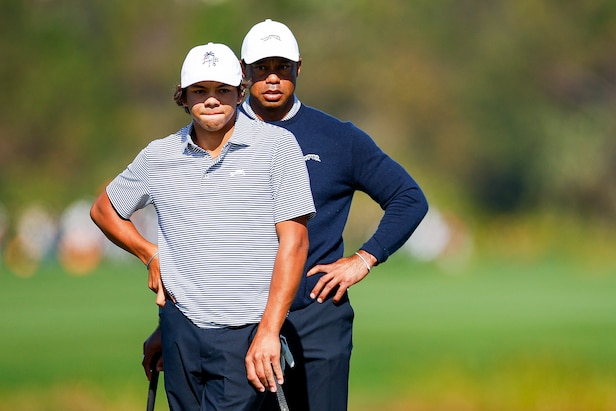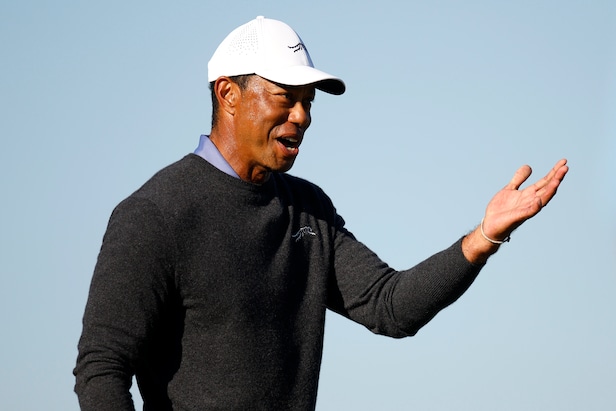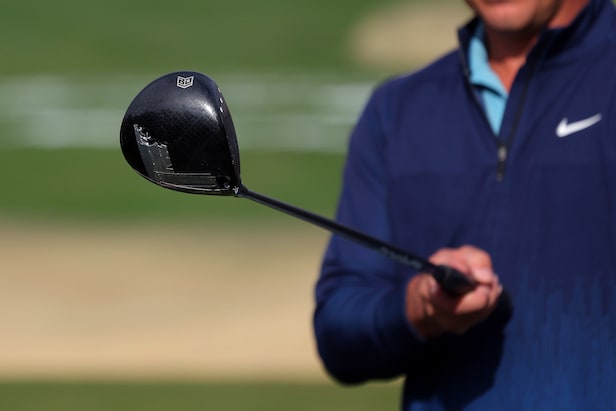Are you leaking power with your driver? This nerdy new stat reveals – Australian Golf Digest

- by Admin
- May 13, 2024
.jpg.rend.hgtvcom.966.1208.suffix/1715606654635.jpeg)
How hard do you swing with your driver on the golf course?
That’s a question I toss to pros with semi-regularity. But like most of my articles, this was a secretly selfish pursuit. My motivation wasn’t hearing their response, but rather, interpreting their response to answer a seperate question.
How hard should I swing with my driver on the golf course?
The problem was that, I wasn’t finding much consistency.
“I’m probably at about 95 percent,” Justin Thomas said.
“I’m pretty much going as hard as I can,” Rory McIlroy said.
“I have more I can access, but I’m about 90 percent of my max,” Bryson DeChambeau says.
With no clean answer developing, I decided the only path was to crunch the numbers. There were a few ways of doing this.
A quick explanation
The PGA Tour tracks clubhead speed and ball speed for each shot they hit during a regular PGA Tour event, along with two of the four majors, through its Shotlink system. That data forms the basis of what we’re about to dive into.
First I looked at clubhead speeds, but there were a few problems with this. Mainly, clubhead speed data isn’t as reliable, and it also doesn’t give you much of an indication of how well a player hit the ball, which is important. There’s no use swinging softer if you start hitting the ball worse. Just ask Stephan Jaeger.
Smash factor measures a combination of club and ball speed, but historically that metric has favored slower-swingers, and routinely spits out results within 0.001 of one another.
So instead, I settled on a measurement I’m calling “Power Percentage.” It compares the difference of a player’s fastest recorded ball speed to their average recorded ball speed over the course of the season. How close is their average to their max? That’s their Power Percentage.
Top 20 Power Percentage
First, let’s look at the top 20 players with the highest Power Percentage based on the PGA Tour’s 2022-23 season statistics. In other words, the players whose cruising speed is close to their maximum speed, and who are therefore are getting the most out of their driver because of it.
Below is the top 25 on tour in Power Percentage, sorted from fastest recorded ball speed to slowest.
There’s a few things that jump out here. Mainly, that some of the results seem to pass the smell test. We regard Rory McIlroy as an elite all-around driver of the ball, for instance, and he holds up here. He ranks second on the PGA Tour in Power Percentage, made all the more impressive considering Rory also ranks inside the top 20 in fastest maximum ball speed recorded.
Simply put, Rory’s got a high ceiling, and he flies near the top of it. It’s rare that you see a golfer cruise at that kind of topline speed with enough control to stay on the road, but that’s what Rory does.
Keyur Khamar
He’s joined by other elite ball-strikers like Jon Rahm, Xander Schauffele and Victor Hovland. Ludvig Aberg just missed out on this top 25 chart above, but ranks 28th in power percentage).
In all, the top third in Power Percentage usually has an average ball speed of about 97 percent of their maximum ball speed. The players who occupy these ranks are a blend of elite SG drivers, along with shorter-hitters who make a living learning how to maximize what they have.
The bottom 20 Power Percentage
On the other end of the spectrum, the bottom third on tour usually has an average ball speed of about 95 percent of their maximum.
Interestingly, you’ll find World No. 1 Scottie Scheffler down here. His average ball speed is about 93 percent of his maximum, but that’s not a bad thing, and can be quickly explained by looking at who’s around him: Scheffler is in many ways, a classic has-more-in-the-tank guy.
If you can swing out for the fences and hit the ball on the screws, you’re McIlroy, Aberg, Hovland, or Rahm.
If you swing slower to make sure you hit the ball on the screws, you’re Tony Finau, Wyndham Clark, Tommy Fleetwood, or Scottie.
“I think I only went after one drive as hard as I could last season,” said Kyle Westmoreland, who had the fastest-recorded ball speed last season. He explained that it came on a closing, reachable par-4 he needed to eagle to make the cut.
But look at the bottom 25 golfers in Power Percentage, and not every player has a high ceiling. That’s because the single-biggest contributor to a loss of ball speed is mis-hits.

HECTOR VIVAS
There are some anecdotal examples of bottom-third Power Potential players who this may apply to. Sahith Theegala has spoken openly about his driver struggles, as has Collin Morikawa, who seems to have turned the corner after a tough season which left him bottom-third in Power Potential. Now that he’s on the upswing, it’ll be interesting to see where he lands next season.
But those two players still did enough to stay around average in terms of overall Ball Speed, which can buy you some wiggle room.
Life is harder on tour when you don’t hit the ball far, and when you don’t generate as much speed as the other guys, hitting the ball well is at a premium. That’s the model for success for shorter-hitters on tour from tee-to-green. If you’ve got a lower than average ceiling with a lower than average Power Percentage, it means you’re probably mixing in too many mis-hits, an probably struggling to keep your card because of it.
TLDR: Why you should care
We started this article talking about this being a means-to-an-end to the selfish question: What does it mean for your game?
In short, 95 percent is the magic Power Percentage number. You should be hitting the ball so you average 95 percent of your maximum ball speed. That’s what the pros do, and it’s a trend that seems to hold up among amateur golfers, too.
If you’re a golfer who is hitting that 95 percent number, yet not hitting the ball as far as you want, like this scratch handicap tester from the Hot List, that’s a sign you need to raise your ceiling.
- Average: 159 mph
- High: 164.4 mph
- Power Percentage: 96.7%
If your Power Percentage is less than 95 percent, like this seven handicap Hot List tester, that’s a sign you’re missing the sweet spot too often. Swinging faster may help, but hitting the ball on the sweetspot more is what will really help.
- Average: 142.4 mph
- High: 152.5 mph
- Power Percentage: 93.4%
So crunch the numbers on your own game and see how you come out.
You can see the full Power Percentage spreadsheet right here.
This article was originally published on golfdigest.com
The Latest News
-
December 23, 2024Guide Helps Australian Workers Expose Tech Wrongdoings
-
December 23, 2024PPHG achieves GSTC multi-site certification for all its Australian properties – Travel And Tour World
-
December 23, 2024Championship three-peat reward for ‘clinical’ Aussies | cricket.com.au
-
December 23, 2024Australian tennis star Purcell takes on voluntary provisional suspension for breaking anti-doping rules
-
December 23, 2024‘Back myself and be fearless’: Konstas lives by mantra in first hit | cricket.com.au





